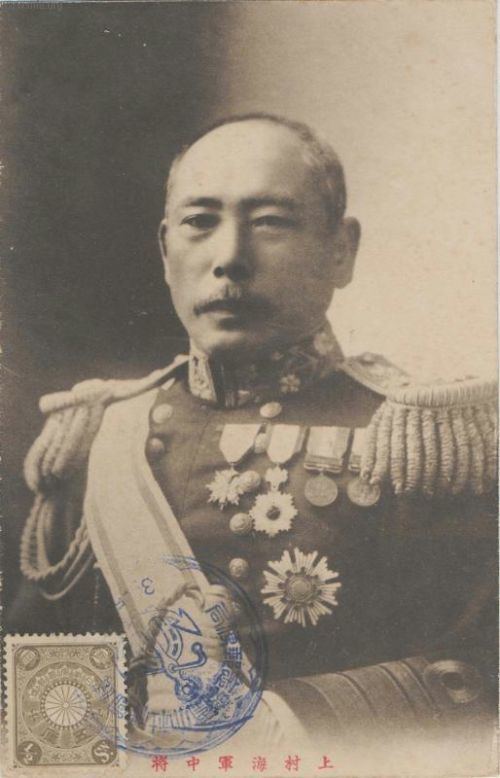Native name 上村 彦之丞 Rank Admiral | Years of service 1871–1914 Name Kamimura Hikonojo | |
 | ||
Died 8 August 1916(1916-08-08) (aged 67)Tokyo, Japan | ||
Baron Kamimura Hikonojō (上村 彦之丞, 1 May 1849 – 8 August 1916) was an early admiral of the Imperial Japanese Navy later commanding the IJN 2nd Fleet during the Russo-Japanese War, most notably at the Battle off Ulsan and Tsushima.
Contents
Biography

Born to a samurai family in the Satsuma Domain (present-day Kagoshima Prefecture), Kamimura served as a foot soldier during the Boshin War. After the Imperial government was established in 1871, Kamimura became one of the first cadets of the Imperial Japanese Naval Academy, later earning a commission as an ensign following his graduation in 1879.
Serving as a junior officer aboard various ships throughout the 1880s, Kamimura’s first command was the gunboat Maya in 1891; he later captained the Chōkai in 1893.
After the outbreak of the First Sino-Japanese War the following year, Kamimura was given command of the new cruiser Akitsushima, winning distinction at the Battle of the Yalu River on 17 September 1894. In his heyday, he was known throughout Imperial Navy as a gruff and bold combat leader in the old samurai tradition.
In the years following the war, Kamimura held a series of posts in the Navy Ministry as well as staff and fleet commands until his promotion to vice admiral in 1903. He visited Great Britain aboard the battleship Asahi from 1 February 1899 - 22 May 1900, during which time he became a rear admiral.
Placed in command of the IJN 2nd Fleet following the first months of the Russo-Japanese War, Kamimura was ordered to contain the Russian cruiser squadron based in Vladivostok. After the Russians escaped and sank Japanese troopships in the Sea of Japan (April and June 1904), he became the object of widespread popular dissatisfaction, with a mob attacking his Tokyo residence, and newspapers hinting that he should commit suicide. He vindicated himself in action by sinking the Russian cruiser Rurik and damaging the cruisers Gromoboi and Rossia on 14 August 1904 at the Battle off Ulsan, and regained his popularity both within the government and the Japanese public. Commanding from the cruiser Izumo, Kamimura later led the IJN 2nd Fleet during the Battle of Tsushima on 27 May 1905.
Appointed commander of the Yokosuka Naval Base in 1905, Kamimura was placed in command of the IJN 1st Fleet in 1909. Previously made a danshaku (baron) under the kazoku peerage system only two years before, Kamimura was made a full admiral on 1 December 1910. Becoming a member of the Supreme War Council the following year, Kamimura entered the reserve list on 1 May 1914, before his death in 1916.
His grave is at the temple of Myōhon-ji in Kamakura.
